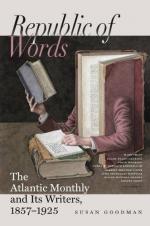This deeper interest has its root in nothing arbitrary, or personal to the artist. It is not inventing something finer than Nature, but seeing more truly what Nature shows, that makes the artistic faculty. This is the lesson taught by the history of Art. Take it up where you will, this history is nothing but the successive unfolding of a truer conception of Nature, only speaking here the language of form and color, instead of words. It is this that lies at the bottom of all its revolutions, and appears in its downfall as well as in its prosperity.
Where the human form is the theme, the aim must of course be to give its typical perfection. No naturalist describes the defects of his specimens, though it may happen that all are imperfect. Comparatively few persons ever saw our robin in the plumage in which it is always described. Only in early spring, not very commonly then, is the black of the head and tail seen pure. But no one hesitates to call this the true color. The sculptor does not reproduce the peculiarities of his model, but aims to give ideal form as the most natural form of man.
But in Painting, and especially in Landscape, it seems less easy to fix upon any ideal, not only from the multifariousness of the details, but, above all, from the elusiveness of the standard. We might agree upon an ideal of human beauty, but hardly upon the ideal of anything else. The sophist in the Hippias Major was prepared to define the beauty of a maiden, or of a mare; but he was confounded when it was required that the beauty of a pipkin should be deducible from the same principle, and yet worse when it was shown to involve that a wooden spoon was more beautiful than a gold one.
What you see in the woods and mountains depends on what you go for and what you carry with you. We may go to them as to a quarry or a wood-pile, or for pleasantness,—the cool spring and the plane-tree shade, as the ancients did,—or to see fine trees, waterfalls, mountains. To many persons the beauty of any scene is measured by its abundance in such specimens of streams, mountains, waterfalls, etc. Of course the connection is demonstrable enough: one collocation of features is more readily suggestive of beauty than another. We expect to find the scenery of a hill-country




